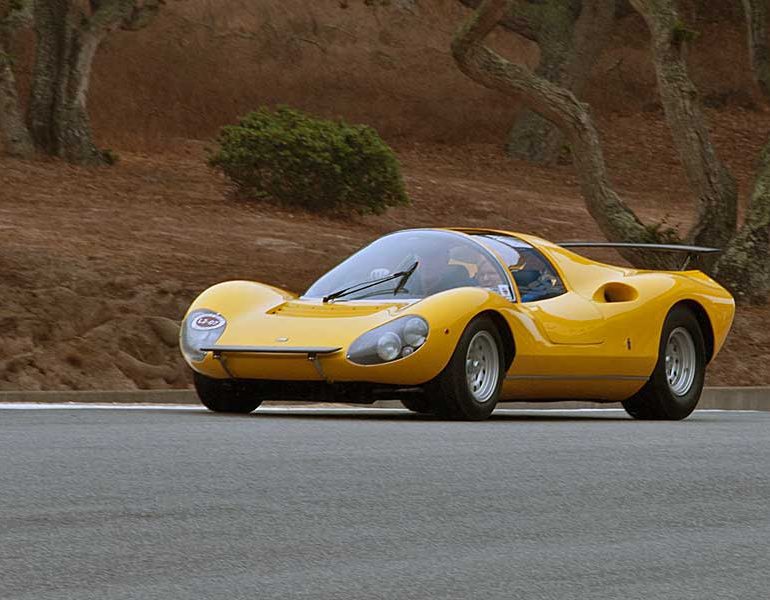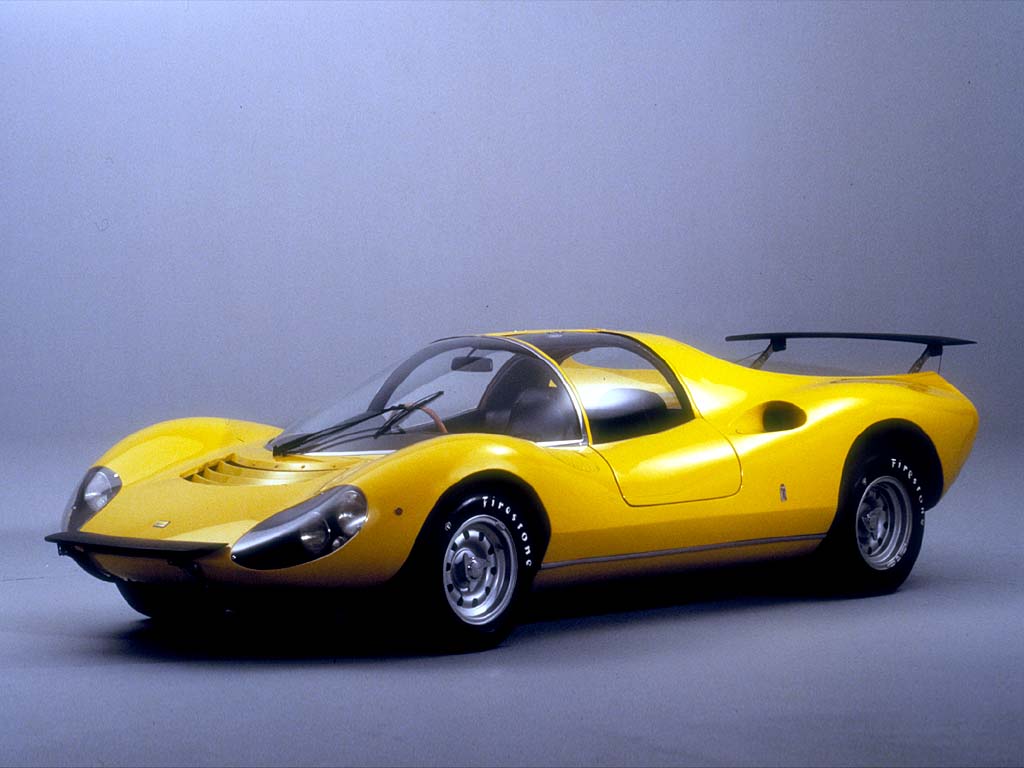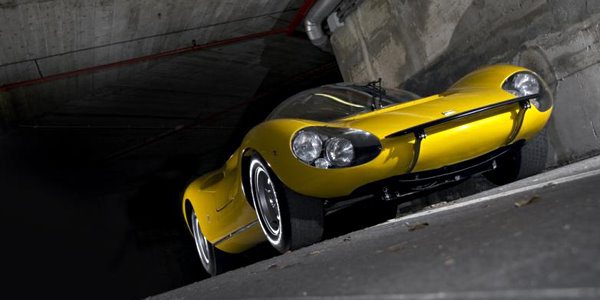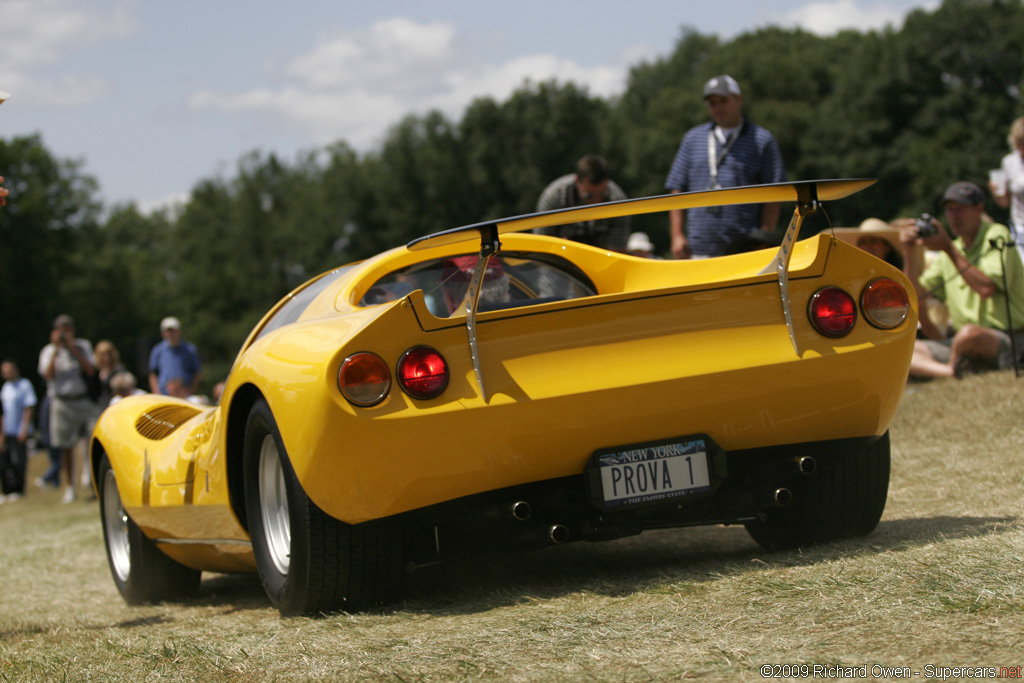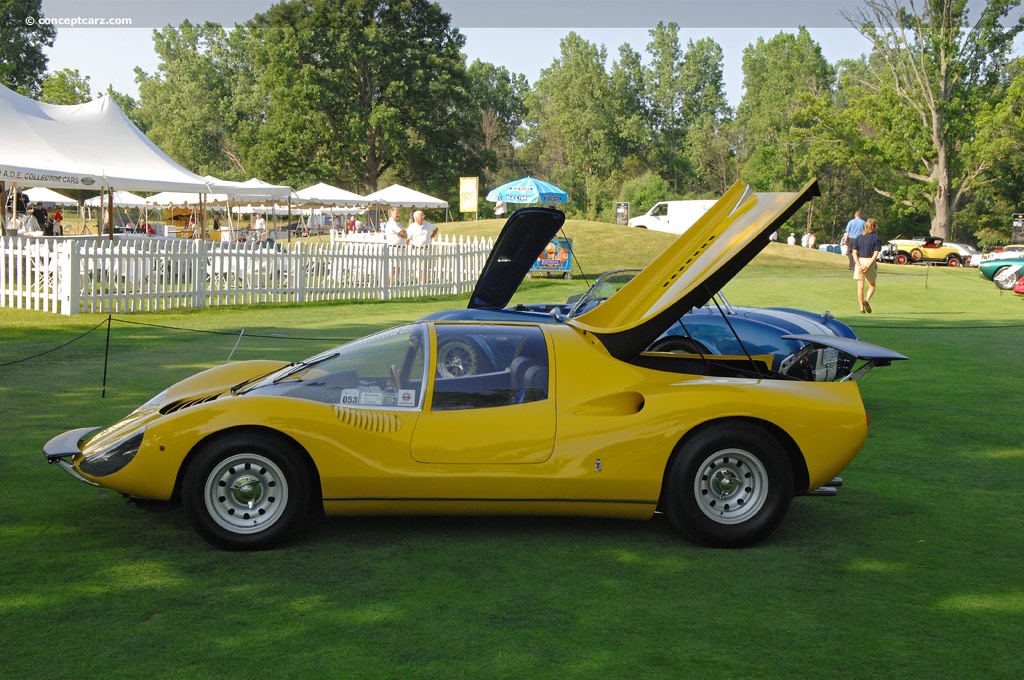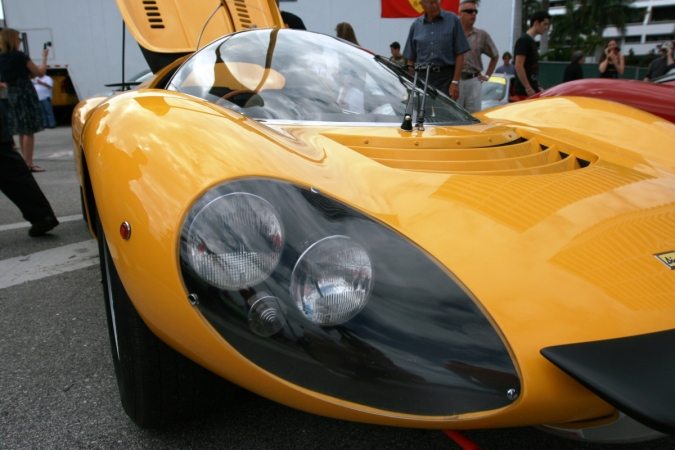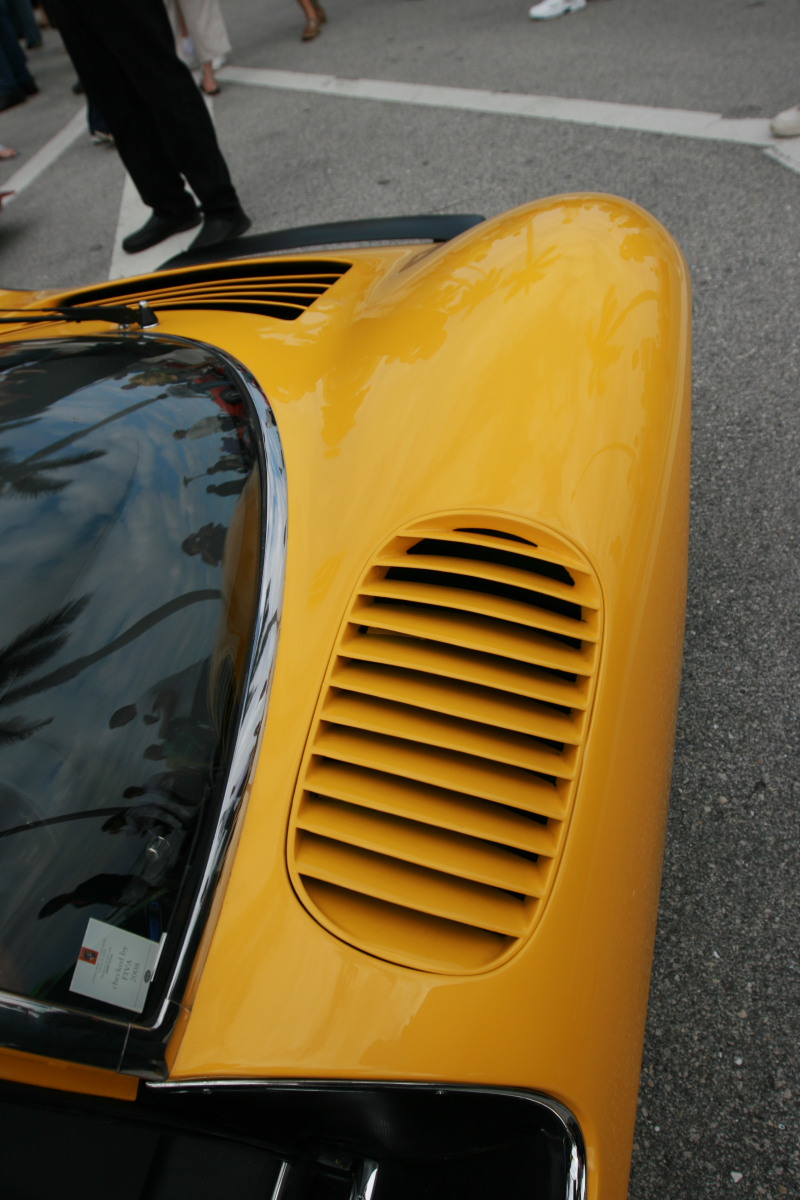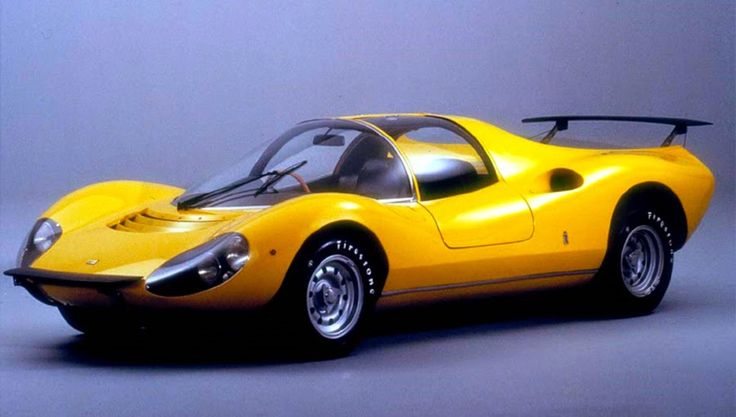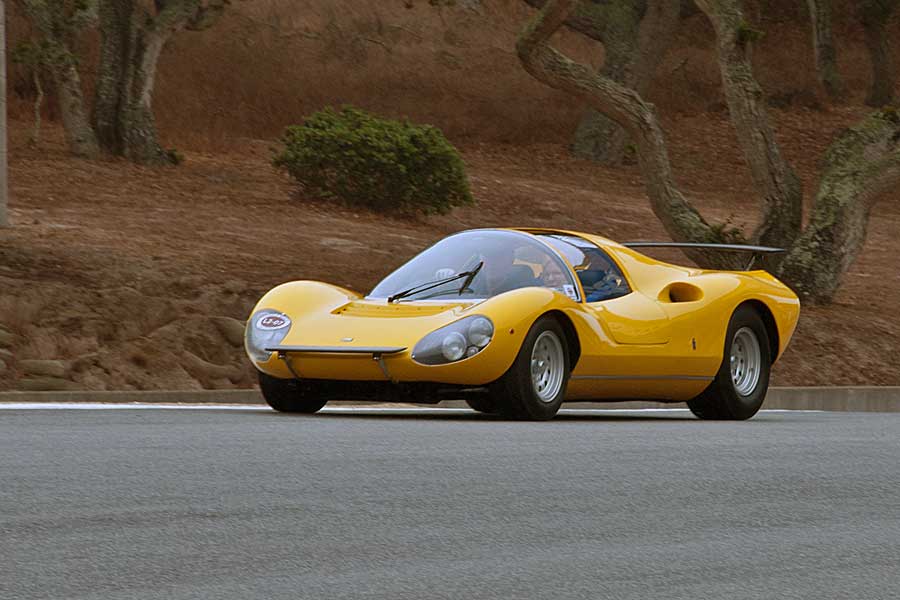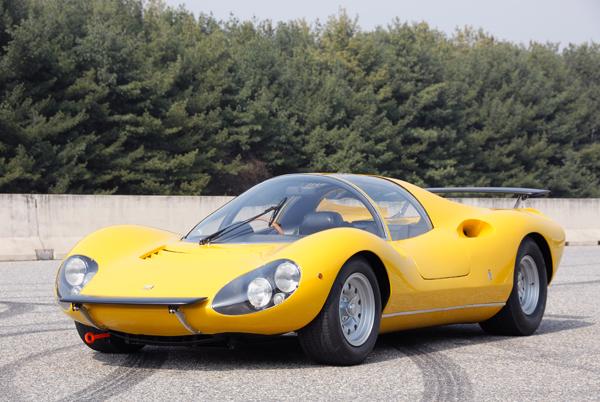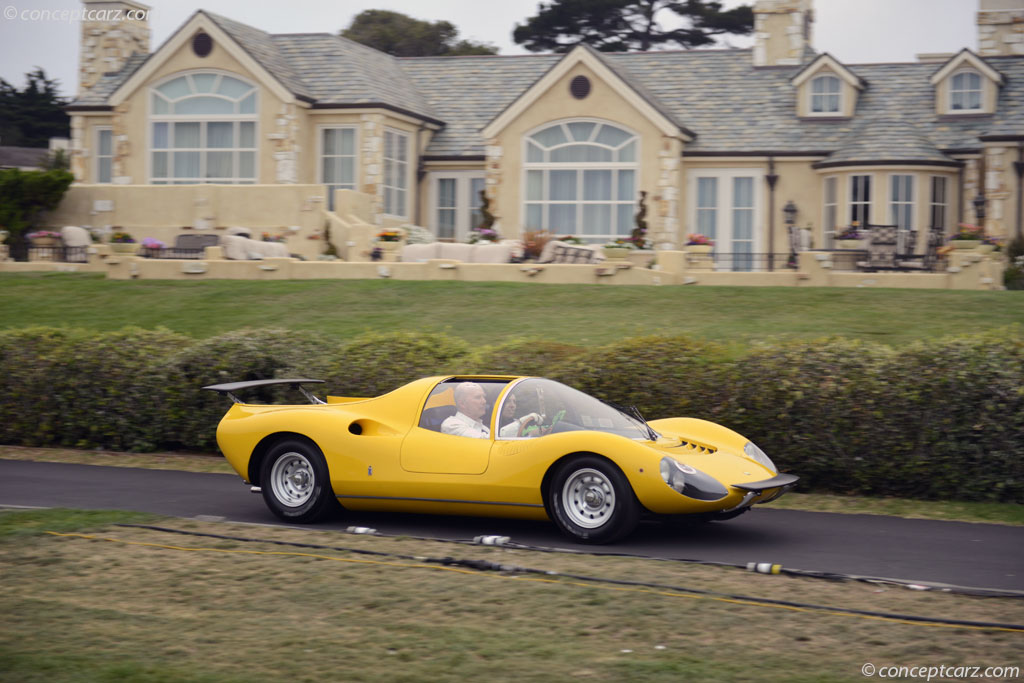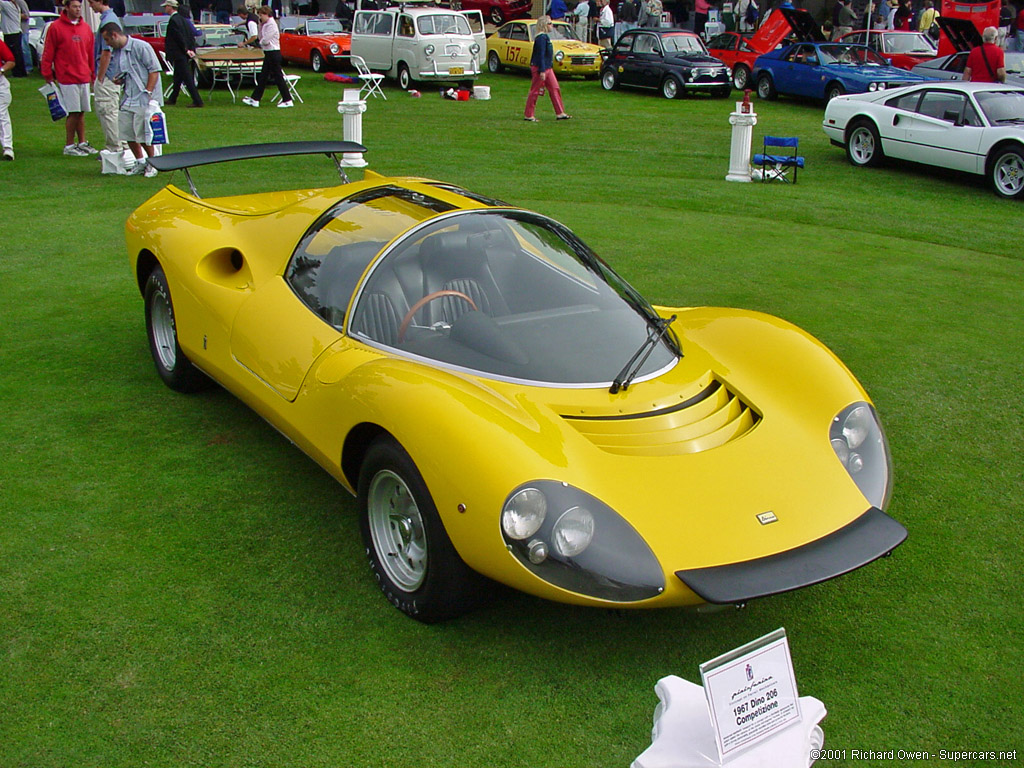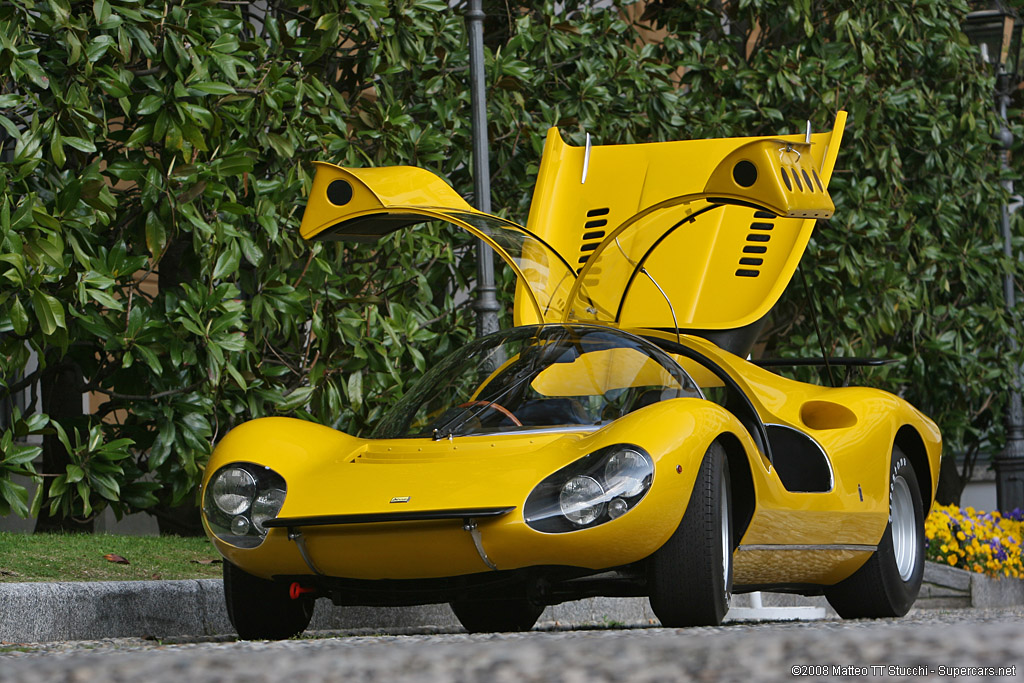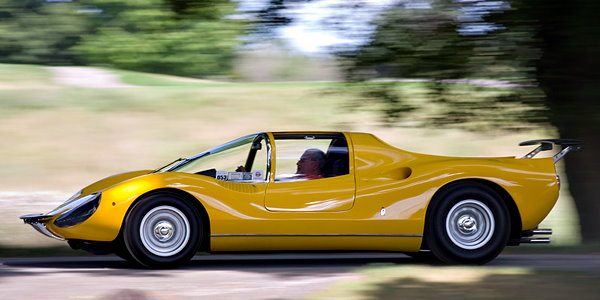1967 Dino 206 Competizione Prototipo
Too often design prototypes are limited to aesthetic mock-ups that do little more then convey future design language. It’s rare to find a fully functional prototype, and even rarer to find one built on a proven race car chassis. Such is the case with this Dino 206 Competizione also known as The Yellow Dino.
This prototype followed three Dino 206 sports racing cars that raced at LeMans. These were powered by Dino V6 engines and raced alongside the famous 330 P3. Both these cars were released at the 1966 Ferrari press conference and can trace their roots back to Formula 2 series in 1957, when Enzo named his new V6 engine after his son Dino Ferrari.
Engineer Vittorio Jano designed the V6 engine which had twin overhead camshafts. Loosely based on the V12, he changed the cylinder bank from 60 to 65 degrees which made the necessary room for carburetors. By 1966, a version of this engine was redesigned by Franco Rocchi and made its way into the 206 sports racing car.
Much like a scale version of the 330 P3, the standard 206 was bodied at Piero Drogo’s Carrozzeria Sports Cars and both featured the same shape, similar light alloy bodywork, semi-monocoque chassis and five-speed transaxles. Labor troubles meant that only 18 of the 206 SP were ever made, so homologation requirements meant that the model was restricted to Group 6 prototype racing.
One very fortunate 206 chassis, number 10523, was prepared by Ferrari before being shipped to Pininfarina to receive a new custom body. Emphasis was placed on using race car engineering in a road-going supercar. As such, it used an engine from one of three Dinos raced at LeMans in 1966 and still retains a proper ACO stamp on the block.
Paolo Martin was new to the Pininfarina team when the 206 project began and his first job was to sculpt a new bodyshape. He started with a 1:10th scale model that was completed in his house before the final shape was hammered out in aluminum. His style borrowed much from the original 206, including its curved greenhouse, but was wholly different in execution.
At the rear, Martin’s design is truncated with a dropped engine cover. From the top the roof, the C panel swoops gently rearward until being cutoff at the rear. Two prominent wings were added late to the project and reflected emerging technologies of the time. These were requested by Pininfarina who wanted to ensure they stayed at the forefront of racing technology. With such a protruding front nose, the aerodynamic lift must have been substantial.
Paolo recalls the design: “This automobile represented the summit of my dreams. I was about 23 years old and being able to see my first 1:1 scale drawing come into life as a wooden mock-up was a very strong emotion. I remember it as my first love and it is my favourite one – of course.”
The car was completed in time for the 1967 Frankfurt Auto Show as a ‘’Dino’’ Berlinette Prototype Competition. Being a fully-functioning prototype, it caused quite a stir. A journalist from the L’Auto-Journal called it one of the most beautiful objects created by man.
Staying true to the competition concept, the car included no speedodometer nor odometer. However, it was fitted mufflers and street tires. Initially the car’s unique wings were painted silver. These were changed to black for it’s appearance at the Paris Auto Show. The front light clusters were also painted black and included turn signal lights after its debut.
Throughout the years, Pininfarina have kept the car in their private museum and occasionally shown it at top events around the world. In remarkably original condition, Pininfarina decided to offer James Glickenhaus the opportunity to be the 206 Competizione’s very first owner. Being a connoisseur of good taste, he naturally accepted the invitation and purchased the car directly from them. It was prepared by Pininfarina before being released. Work included testing the engine to 175 bhp @ 6500 rpm. The car was also put in the wind tunnel to properly adjust the wings.
The car will debut with private ownership at the upcoming Villa d’Este concours.
Story by Richard M. Owen
1967 Dino 206 Competizione Prototipo Images
See full 1967 Dino 206 Competizione Prototipo Gallery
In Detail
| type | One Of |
| released at | 1967 Frankfurt |
| built at | Cambiano, Italy |
| body stylist | Paolo Martin |
| coachbuilder | Pininfarina |
| production | 1 |
| engine | Tipo 231/B V6 |
| position | Mid, Longitudinal |
| aspiration | Natural |
| block material | Aluminum |
| displacement | 1987 cc / 121.3 in³ |
| bore | 86 mm / 3.39 in |
| stroke | 57 mm / 2.24 in |
| power | 162.6 kw / 218.0 bhp @ 9000 rpm |
| specific output | 109.71 bhp per litre |
| bhp/weight | 342.77 bhp per tonne |
| redline | 900 |
| body / frame | Aluminum Body over Steel Spaceframe |
| front brakes | Discs |
| rear brakes | Discs |
| curb weight | 636 kg / 1400 lbs |
| wheelbase | 2281 mm / 89.8 in |
| front track | 1354 mm / 53.3 in |
| rear track | 1354 mm / 53.3 in |


